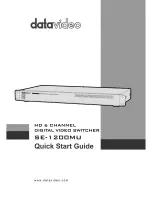
To remove a transceiver from a device:
1. Place the antistatic bag or antistatic mat on a flat, stable surface.
2. Wrap and fasten one end of the ESD wrist strap around your bare wrist, and connect the other end of
the strap to the ESD point on the switch.
3. Label the cable connected to the transceiver so that you can reconnect it correctly.
WARNING:
Do not look directly into a fiber-optic transceiver or into the ends of
fiber-optic cables. Fiber-optic transceivers and fiber-optic cables connected to
transceivers emit laser light that can damage your eyes.
WARNING:
Do not leave a fiber-optic transceiver uncovered except when inserting
or removing a cable. The rubber safety cap keeps the port clean and prevents accidental
exposure to laser light.
CAUTION:
Do not bend fiber-optic cables beyond their minimum bend radius. An
arc smaller than a few inches in diameter can damage the cables and cause problems
that are difficult to diagnose.
4. Remove the cable connected to the transceiver (see
“Disconnecting a Fiber-Optic Cable” on page 168
).
Cover the transceiver and the end of each fiber-optic cable connector with a rubber safety cap
immediately after disconnecting the fiber-optic cables.
164
Summary of Contents for QFX5220
Page 1: ...QFX5220 Switch Hardware Guide Published 2019 11 07 ...
Page 18: ......
Page 77: ......
Page 107: ......
Page 148: ......
Page 172: ...5 CHAPTER Troubleshooting Hardware Troubleshooting the QFX5220 179 ...
Page 173: ......
Page 182: ......
Page 206: ...Restricted Access Warning 213 ...
Page 221: ...Jewelry Removal Warning 228 ...
Page 224: ...Operating Temperature Warning 231 ...
Page 234: ...DC Power Disconnection Warning 241 ...
Page 238: ...DC Power Wiring Sequence Warning 245 ...















































